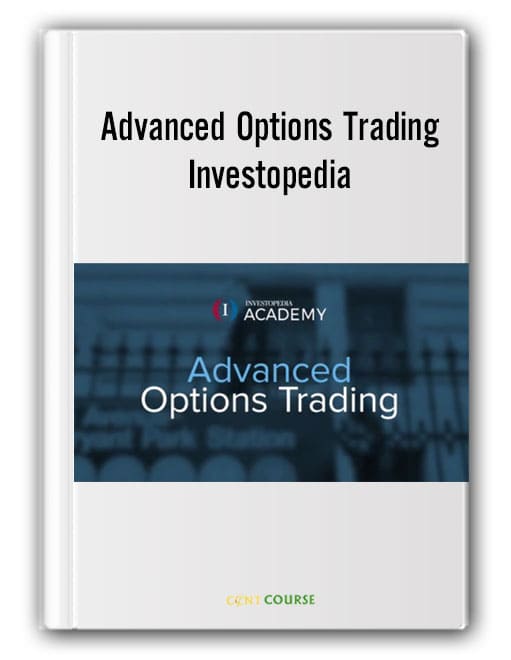Have you ever felt the thrill of navigating a complex maze, knowing that each turn holds the potential for both reward and risk? Options trading, the world of financial derivatives, offers a similar sense of excitement. It’s a realm where strategies can be crafted to capitalize on market movements, and the potential for gain is often amplified. But like that maze, options trading requires a keen understanding of the path ahead to avoid getting lost. This comprehensive guide will equip you with the knowledge to navigate the intricate world of options trading, illuminating the opportunities and risks that lie within.

Image: tradebrains.in
Imagine yourself standing on a bustling marketplace, surrounded by traders shouting bids and offers. In this arena, options contracts act like powerful, flexible tools, granting you the right, but not the obligation, to buy or sell an underlying asset at a predetermined price and time. From the seasoned trader to the curious investor, options trading can be a game-changer, allowing you to tailor your strategies based on your risk tolerance, market outlook, and investment goals.
Understanding the Foundation: What are Options?
Think of an option contract as a promise, a contract that gives you the right to buy or sell an underlying security at a certain price within a defined time frame. Imagine you’re offered the right to purchase a share of Apple stock for $150 in the future, even if the market price climbs to $200. This is a call option, giving you the potential to profit by exercising the right to buy at a lower price and selling at the higher market price. However, if the price of the stock drops to $100, you wouldn’t be obligated to exercise your option. You wouldn’t lose money except for the initial premium you paid for the right.
There are two main types of options contracts:
- Call Options: Grants the holder the right to buy an underlying asset at a set price (the strike price). Call options are beneficial when you believe the price of the underlying asset will rise.
- Put Options: Grants the holder the right to sell an underlying asset at a set price (the strike price). Put options are advantageous when you anticipate a fall in the price of the underlying asset.
Imagine you believe the price of XYZ Company, currently trading at $50 per share, will rise to $60 within the next month. You could buy a call option on XYZ stock with a strike price of $55, giving you the right to buy the shares at $55, even if the market price rises to $60. If your prediction proves accurate, you can purchase the shares at $55 and immediately sell them in the market at $60, pocketing the profit of $5 per share minus the premium you paid for the option.
Exploring the Nuances: Key Concepts in Options Trading
Strike Price: The price at which you can buy or sell the underlying asset under the terms of the option contract.
Expiration Date: The time when the option contract expires, and you must decide whether to exercise your right or let it expire worthless.
Premium: The price you pay to acquire an option contract, which represents the value of the right you are buying.
Underlying Asset: The security or asset that the option contract is based on (like stocks, indices, or commodities).
In-the-Money (ITM): An option is ITM when the strike price is favorable to the holder compared to the current market price. For example, a call option is ITM if the strike price is lower than the market price.
Out-of-the-Money (OTM): An option is OTM when the strike price is unfavorable to the holder compared to the current market price. For example, a put option is OTM if the strike price is higher than the market price.
At-the-Money (ATM): An option is ATM when the strike price equals the current market price.
Understanding how these concepts intertwine is crucial to building profitable strategies.
Options Strategies: From Simple to Advanced
Options trading offers a wide spectrum of strategies, each suited for different market conditions and risk profiles. Here are some common strategies to get you started:
Covered Call: A conservative strategy involving selling a call option on shares that you already own. You gain premium income by selling the call, but you also limit your upside potential if the stock price rises significantly.
Cash-Secured Put: Involves selling a put option and setting aside enough cash to cover the potential obligation to buy the underlying shares. This strategy is beneficial when you anticipate a stock price to stay above the strike price. It provides premium income and potential for capital appreciation.
Straddle: Involves buying both a call and a put option with the same strike price and expiration date. This strategy is suitable for investors who expect a large price movement in the underlying asset but are unsure about the direction (upward or downward). A straddle allows you to profit if the underlying stock price moves significantly in either direction, but it also carries the potential for high losses if the price stays near the strike price.
Strangle: Similar to a straddle but involves buying a call and a put option with different strike prices. A strangle is a less expensive strategy than a straddle, but it also offers lower profit potential.

Image: centcourse.com
Navigating the Risks: Understanding Potential Losses
Options trading is often associated with high reward potential because it leverages your capital. However, it’s crucial to recognize that the leverage can also amplify your losses.
Unlimited Loss Potential: With some options strategies, you can lose more than you initially invested, especially if the market moves against your prediction. This is because the potential profit on an options contract is limited to the premium paid while your loss potential can exceed the initial investment.
Time Decay: Options contracts lose value over time. The rate of decay accelerates as the expiration date approaches, especially for out-of-the-money options. Understanding and factoring in this time decay rate is essential for successful option trading.
Market Volatility: Options are sensitive to market volatility. Higher volatility typically favors options prices. If you correctly anticipate a surge in volatility, options trading can be advantageous. However, if volatility unexpectedly spikes against your prediction, your losses could be significant.
Building Your Options Trading Arsenal
Options trading is not for the faint of heart. However, embarking on this journey can be rewarding for those willing to learn and adapt. Here are some valuable tips for building your options trading arsenal:
- Start with Education: Take your time to understand the fundamentals, risks, and complexities of options trading. Investopedia provides comprehensive resources, explainer videos, and interactive tools to aid your learning journey.
- Risk Management: Establish a realistic trading plan with strict risk management parameters. Determine your maximum potential loss for each trade and stick to it.
- Start Small: Begin with a small portion of your portfolio dedicated to options trading and gradually increase your exposure as you become more comfortable.
- Embrace a Learning Mindset: Options trading is a dynamic field. Continuous learning and adapting to changing market conditions are vital for success.
Options Trading Investopedia
Your Journey Begins Today
Options trading offers a unique lens to view the market, empowering traders to customize their trading strategies based on their risk appetite and market outlook. But remember, it’s a double-edged sword – the potential for significant gains is accompanied by equally significant risks. Starting with a strong foundation, understanding the concepts, and mastering risk management will equip you to unlock the potential of options trading and potentially navigate your investment journey to new heights.






